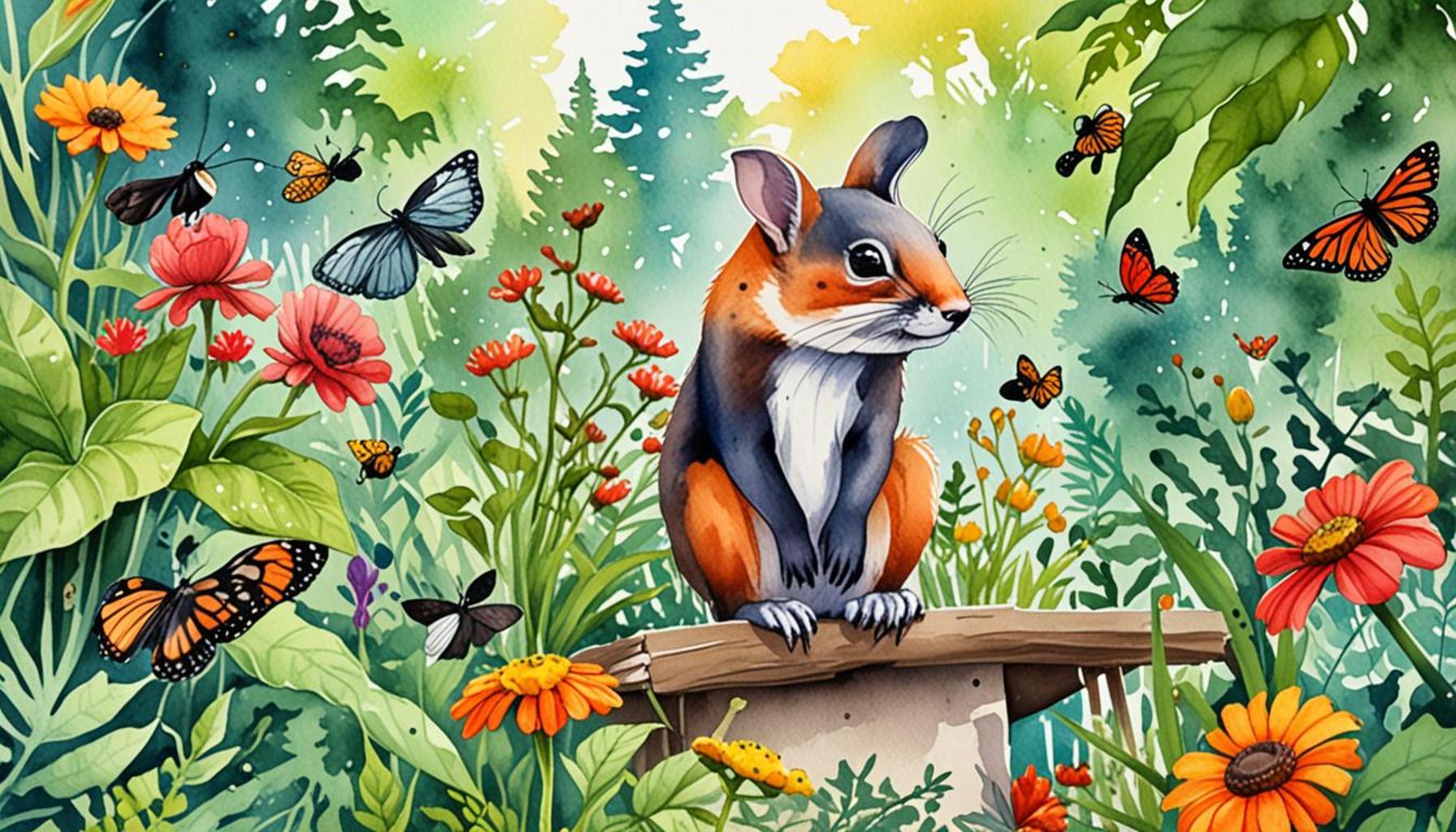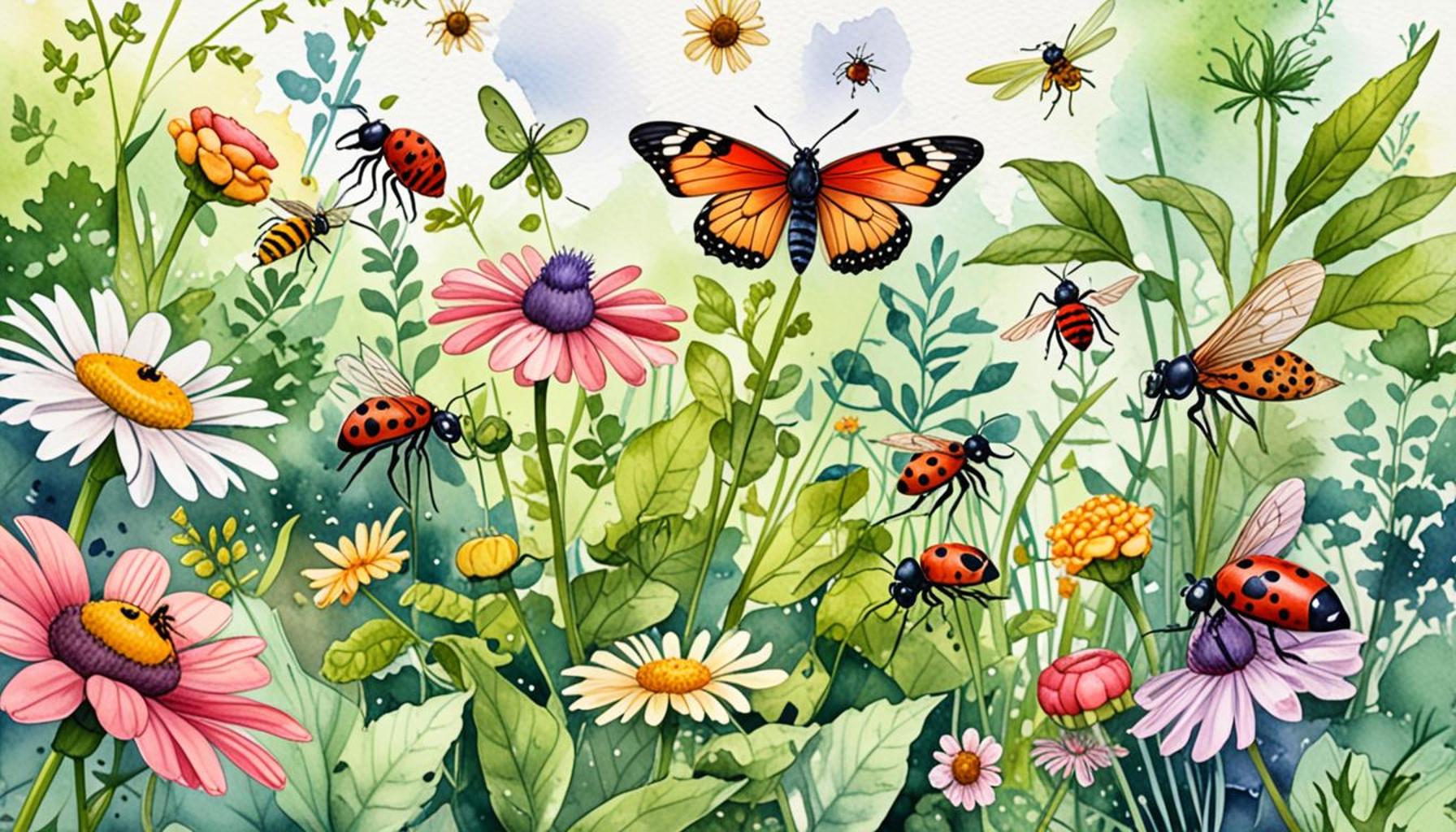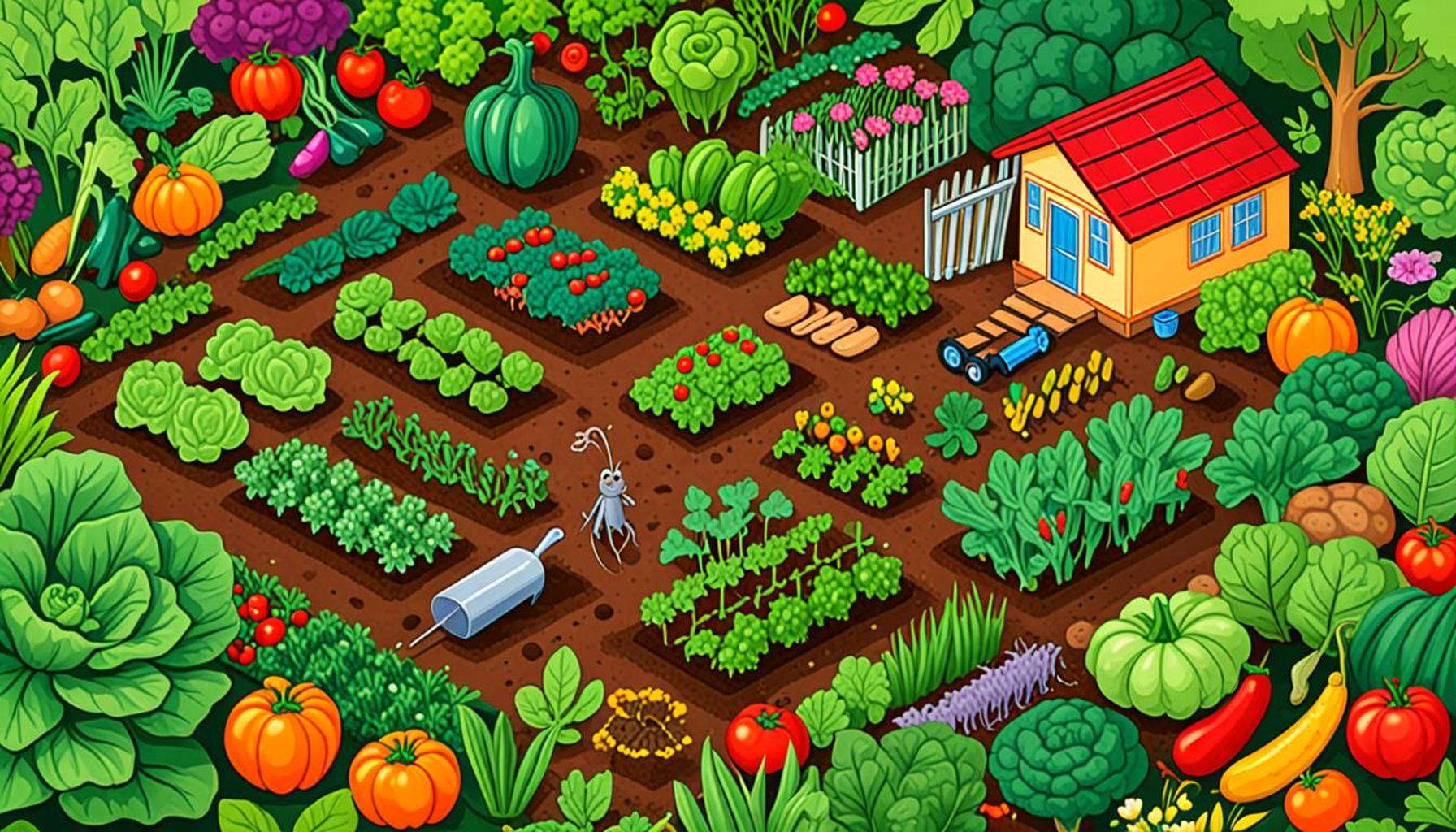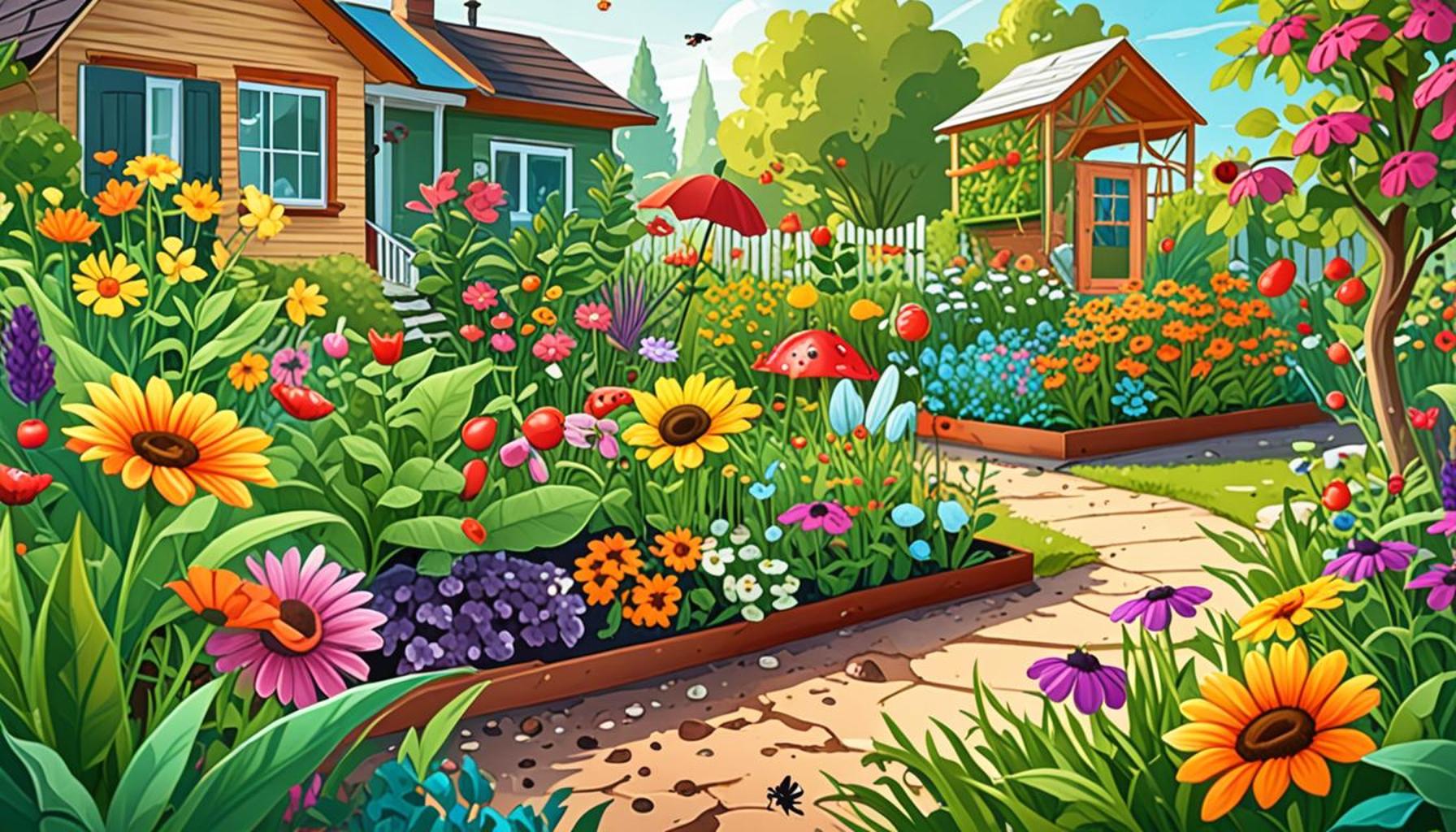Building a Healthy Ecosystem: How to Attract Predatory Animals for Natural Pest Management in Your Garden

Creating Balance in Your Garden
Every gardener dreams of a flourishing garden, but pests can quickly turn that dream into a nightmare. Instead of relying solely on chemicals, consider the benefits of attracting predatory animals to help manage these nuisances naturally. By implementing eco-friendly practices, you can foster a healthier garden ecosystem that not only looks great but also functions optimally.
The Power of Nature
Utilizing nature’s own solutions offers numerous advantages that go beyond merely reducing pest populations. For instance, biological control, the practice of using natural predators to regulate pest species, helps to manage pest populations without harming beneficial insects such as pollinators. By allowing ladybugs to feast on aphids, for example, you can maintain a balanced garden while boosting your plant health.
Additionally, focusing on environmental health is vital. Reducing chemical use enhances soil and water quality, leading to come healthier plants. Chemical runoff can pollute waterways and harm aquatic wildlife. By employing natural pest management techniques, you promote an ecosystem that supports both terrestrial and aquatic life.
The financial benefits of adhering to these sustainable practices cannot be overstated. A cost-effective approach to pest management entails fewer expenditures on pesticides, which can be quite pricey. Instead, consider investing in natural solutions that yield long-term results while keeping your gardening budget intact.
Imagine a garden where birds, bats, and beneficial insects thrive, actively working to keep pests at bay. To attract these essential allies, certain environmental factors must be nurtured. Here are a few strategies to shape your garden into a welcoming habitat:
- Providing natural food sources: Plant native flowering plants and nectar-rich blossoms to nourish pollinators. Species such as goldenrod, coneflower, and milkweed not only attract beneficial insects but also support local biodiversity.
- Creating diverse habitats: Install birdhouses, bat boxes, or insect hotels to encourage various species to take residence in your garden. Creating areas of sunlight and shade can also help attract different wildlife.
- Ensuring water availability: Integrating a small water source, like a birdbath or shallow dish, can quench the thirst of birds and beneficial insects, increasing the likelihood that they’ll stay in your garden.
As you explore these methods to cultivate predatory helpers, you not only enrich your garden but also contribute to a more sustainable environment. Embracing these practices can create a vibrant ecosystem where natural processes prevail and minimize the need for synthetic interventions. Get ready to embark on this exciting journey toward a thriving garden, where nature does the heavy lifting! Your green thumb will appreciate the resilience and diversity that such practices bring, ultimately transforming not just your garden but also the broader ecosystem.
DIVE DEEPER: Click here to discover more
Understanding Your Garden’s Ecosystem
To effectively attract predatory animals to your garden, it is essential to first grasp the intricacies of your garden’s ecosystem. Every organism within this environment plays a vital role, and recognizing these relationships can empower you to cultivate a balanced habitat. Predatory animals, such as birds, bats, and certain insects, serve as the first line of defense against garden pests. By promoting their presence, you can establish a natural form of pest control that works in harmony with your plants.
The Role of Predatory Animals
At the heart of a healthy ecosystem are predatory animals that regulate pest populations naturally. For example, birds such as wrens, swallows, and blue jays are notorious for feasting on caterpillars and beetles that can wreak havoc in your garden. Bats, often overlooked, consume vast quantities of moths and other nocturnal pests, playing a significant role in maintaining pest balance during the night hours. Moreover, certain insects like ladybugs and lacewings are also beneficial to gardeners, effectively controlling aphids and other harmful species.
Understanding these predatory relationships allows you to appreciate the value these animals bring to your garden. Not only do they contribute to pest control, but they also help pollinate plants and enhance overall biodiversity. By attracting these allies, you create a sanctuary that is both productive and resilient against pest pressures.
Steps to Attract Predatory Animals
To invite these important allies into your garden, consider implementing some of the following strategies:
- Plant native species: Incorporate native plants that thrive in your local environment. These species provide the necessary food and habitat for predatory insects. Look for varieties such as black-eyed Susans, asters, and shrubs that bear berries to attract birds.
- Build diverse layers: Create a multi-layered garden by combining various heights of plants, from ground covers to tall perennial flowers. This mimicry of natural habitats encourages different species to make your garden their home.
- Avoid pesticides: Steer clear from chemical pesticides that can inadvertently harm beneficial predatory animals. Instead, focus on integrated pest management practices that emphasize prevention and natural control methods.
- Employ companion planting: Pair plants that naturally repel pests with those that attract beneficial insects. For example, marigolds can be planted alongside vegetables to deter harmful pests while drawing in predatory species.
As you embark on the journey of building a healthy ecosystem in your garden, remember that patience and observation are key. By cultivating an inviting atmosphere for predatory animals, you increase your chances of naturally managing pest populations while promoting a thriving, diverse environment. Your garden can become a dynamic sanctuary where nature not only survives but flourishes, offering a wealth of benefits while minimizing the reliance on harmful chemicals.
| Category | Advantages |
|---|---|
| Attracting Birds | Birds control insect populations effectively and provide natural pest management. |
| Encouraging Beneficial Insects | Predatory insects such as ladybugs help combat aphids, improving plant health. |
| Building Habitat Structures | Providing shelters for bats and frogs enhances biodiversity in your garden. |
| Using Native Plants | Native species attract a variety of predators, creating a harmonious ecosystem. |
Incorporating predatory animals into your garden is not just about aesthetics; it plays a vital role in sustainable pest management. Birds, for instance, are remarkable allies, adept at controlling insect populations. Their presence transforms an ordinary garden into a thriving ecosystem, reducing the need for chemical interventions.Moreover, encouraging beneficial insects like ladybugs or lacewings is key to keeping harmful pests at bay. These natural predators feast on pests such as aphids, acting as valuable caretakers for your plants. Structuring your garden to provide habitats for wildlife, such as bat houses or frog ponds, can further enhance biodiversity. These additions not only attract predatory animals but also enrich the soil and promote a balanced environmental cycle.Additionally, opting for native plants is a smart strategy. These plants are not only adapted to local conditions but also draw in specific predators, ensuring that your garden remains a vibrant and self-sustaining ecosystem. By fostering an environment rich in diverse species, you are taking significant steps towards creating a health-conscious garden.
DISCOVER MORE: Click here to learn about the pros and cons
Creating Habitats for Predatory Animals
Attracting predatory animals to your garden is not merely about planting flowers and waiting for their arrival. Creating suitable habitats that cater to the needs of these wildlife allies is essential for ensuring their long-term presence. By incorporating specific features into your garden, you can make it an appealing sanctuary that supports the lives of beneficial insects, birds, and even small mammals.
Water Sources and Shelter
Like all creatures, predatory animals need water and shelter to thrive. Birdbaths and small ponds can provide hydration for birds and other wildlife while adding an attractive element to your garden. Installing birdhouses or bat boxes offers safe nesting sites for these predators, ensuring they have a reliable place to breed and raise their young. It’s important to choose styles designed specifically for your target species, as different birds and bats have specific needs when it comes to nesting.
For insectivorous animals like ladybugs and lacewings, planting native grasses and creating ground cover can provide essential shelter and breeding grounds. These plants create moisture-rich environments where beneficial insects can lay eggs and find refuge from adverse weather and predators.
Food Availability and Biodiversity
Moreover, introducing diverse food sources in your garden directly impacts your ability to attract predatory animals. Increasing plant diversity not only supports beneficial insects, but it also fosters a web of interactions that can enhance your ecosystem. Trimming your garden regularly to promote growth cycles can help provide a steady food supply for both plants and their associated fauna.
Consider incorporating flowering plants throughout the growing season. Plants like dill, fennel, and yarrow can draw in predatory insects while also providing nectar for adult butterflies and bees. This interconnected paradigm allows for optimal pest control while enabling pollination, further increasing the productivity of your garden.
Composting and Mulching
Another effective method of attracting beneficial species is through the use of compost and mulch. Compost piles can create a hotbed for beneficial microorganisms, insects, and even small mammals that support healthy soil and plant growth. Additionally, a layer of organic mulch serves as prime real estate for insects while retaining soil moisture. Having these organisms around not only attracts predatory animals that feed on them, but they also contribute to the overall fertility of your garden.
Candidacy for Conservation Programs
For those seriously committed to fostering a rich biodiversity, participating in local conservation programs can amplify your efforts. Many community initiatives focus on creating wildlife gardens that benefit area’s ecological health. Additionally, reaching out to local garden clubs or nature societies may provide avenues for learning, sharing resources, and networking with like-minded individuals passionate about sustainability and biodiversity.
Attracting predatory animals in your garden is a journey driven by thoughtful planning and active engagement with the natural world. By implementing these habitat-enhancing strategies, you set the stage for a thriving ecosystem, giving both flora and fauna the chance to flourish side by side. As you take these steps, remember that each action contributes significantly to the health and sustainability of not only your garden but the environment at large.
DISCOVER MORE: Click here for expert harvesting techniques
Conclusion
In conclusion, building a healthy ecosystem in your garden is an endeavor that extends beyond mere aesthetics; it encompasses a commitment to sustainable practices and biodiversity. By focusing on attracting predatory animals, gardeners can naturally and effectively manage pests while enhancing the overall resilience of their garden environment. The strategies discussed—creating habitats, providing shelter, ensuring food availability, and leveraging organic methods like composting—are instrumental in nurturing a vibrant ecosystem.
Moreover, fostering relationships with local wildlife not only contributes to your garden’s health but also serves a greater purpose by promoting ecological balance in your community. Consider the broader impacts of your gardening efforts; by engaging with local conservation programs and sharing your insights with fellow gardeners, you can be part of a movement that values sustainability and biodiversity.
As you cultivate your garden, remember that each step you take—be it planting native species or building water features—fosters an environment where both plants and animals thrive. Ultimately, by embracing the principles of natural pest management, you not only achieve a flourishing garden but also play a crucial role in contributing to a healthier planet. Dive deeper into this journey and explore the myriad ways you can enhance your garden’s ecosystem, for the rewards of this harmonious approach are as rich as the soil you cultivate.


